Search
Search Results

Image
Stele of Adad-Nirari III
Limestone stele of the Assyrian king Adad-Nirari III (r. 810-783 BCE) from Tell al-Rimah, in modern-day Nineveh Governorate, Iraq. The king is praying before gods and goddesses symbols. The cuneiform inscriptions mention the king's titles...

Image
Dexileos Stele (detail)
Detail of the Dexileos Stele. Visible are the holes where metal attachments would have been placed. On his leg a sword; in his right hand a spear; in his left hand the horse's reigns; and on his head, most likely a wide-brimmed hat, the petasos...
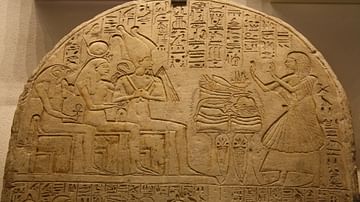
Image
Stele of Pay
The limestone 'Stele of the Scribe Pay'. On the left the gods Osiris, Isis and Horus watch various funerary ceremonies involving the deceased. New Kingdom, Dynasty XIX, 1292-1186 BCE, provenance unknown. (Egyptian Museum, Turin)
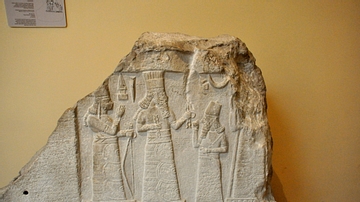
Image
Shamsh-res-usur Stele
Shamsh-res-usur was a local governor of Mari and Suhi. The stele tells us that this governor reigned for 13 years. During this period, he re-built the city of Gabarri-Ibni, established irrigation canals, and encouraged the planting of date...
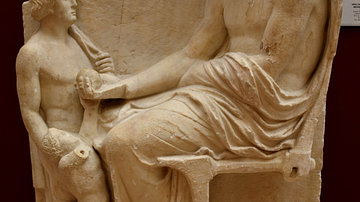
Image
Funerary Stele from Amisus Showing a Farewell Scene
In this funerary stele, the deceased sits on a chair and appears to give a rounded object to a child (or maybe the reverse), who stands in front of him. Marble. Classical Period, near the end of the 5th century BCE. From Amisus, Samsun, in...

Definition
Sea Peoples
The Sea Peoples were a confederacy of naval raiders who harried the coastal towns and cities of the Mediterranean region between c. 1276-1178 BCE, concentrating their efforts especially on Egypt. They are considered one of the major contributing...
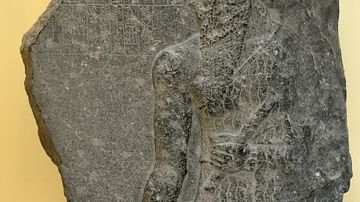
Article
The Legend of Cutha
The Legend of Cutha (also known as the Cutha Legend and Kutha Legend) is a fictional work dated to the 2nd millennium BCE belonging to the genre known as Mesopotamian Naru literature. It features the Akkadian king Naram-Sin (r. 2261-2224...

Definition
Nefertiti
Nefertiti (c. 1370 - c. 1336 BCE) was the wife of the pharaoh Akhenaten of the 18th Dynasty of Egypt. Her name means, `the beautiful one has come' and, because of the world-famous bust created by the sculptor Thutmose (discovered in 1912...
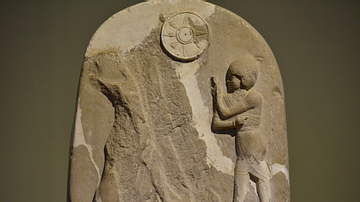
Image
Stele of Dadusha at the Iraq Museum (detail)
This detail shows the upper register of the stele of Dadusha. The stele is an elongated stone monument which originally stood at the Temple of Adad at Eshnunna. The front side is carved with four registers while the narrow sides were inscribed...
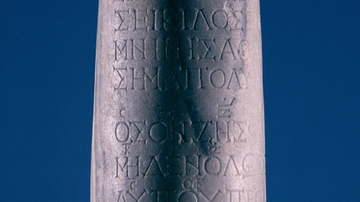
Image
The Seikilos Stele
The Seikilos Stele, Copenhagnen NM inv.14897. This grave stele preserves the oldest complete song that has survived to our times, and dates to around the 2nd century CE. Found in 1883 by Sir William Ramsay at Aydin (Tralleis), the grave...